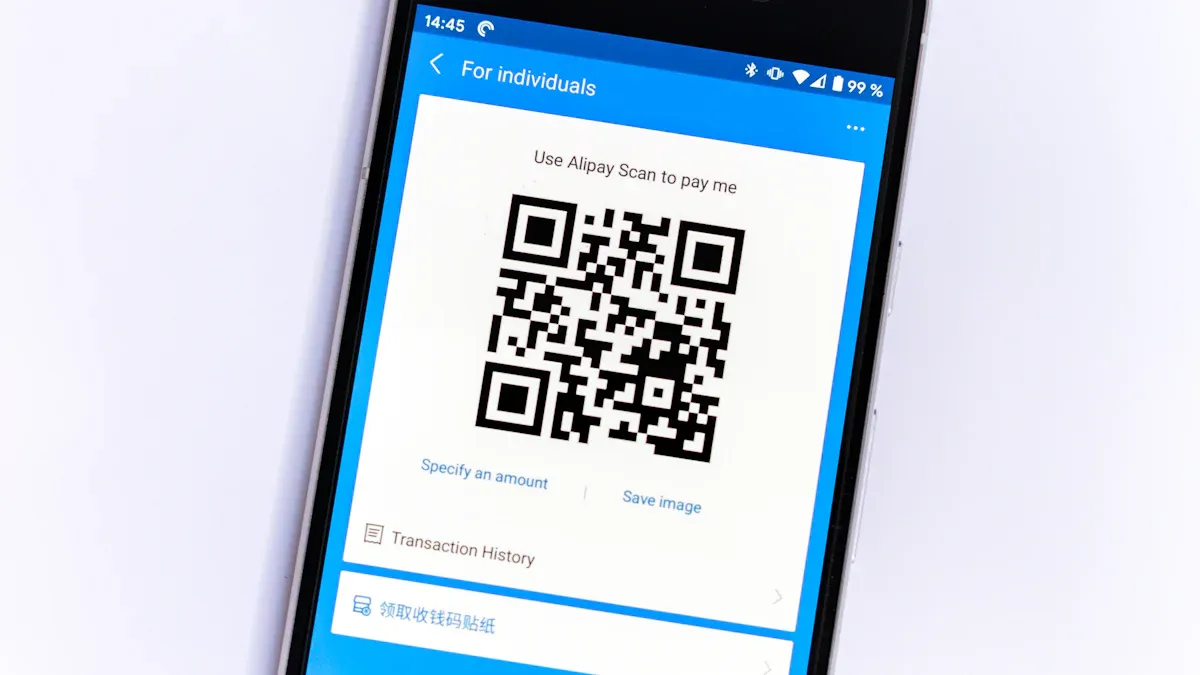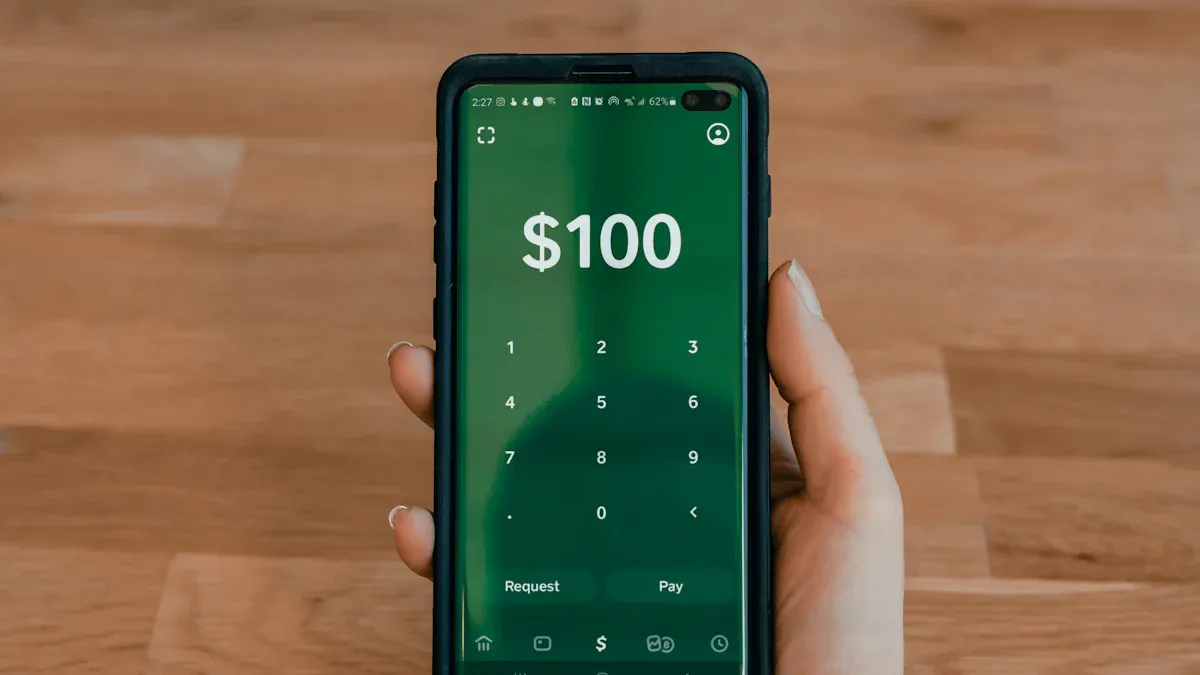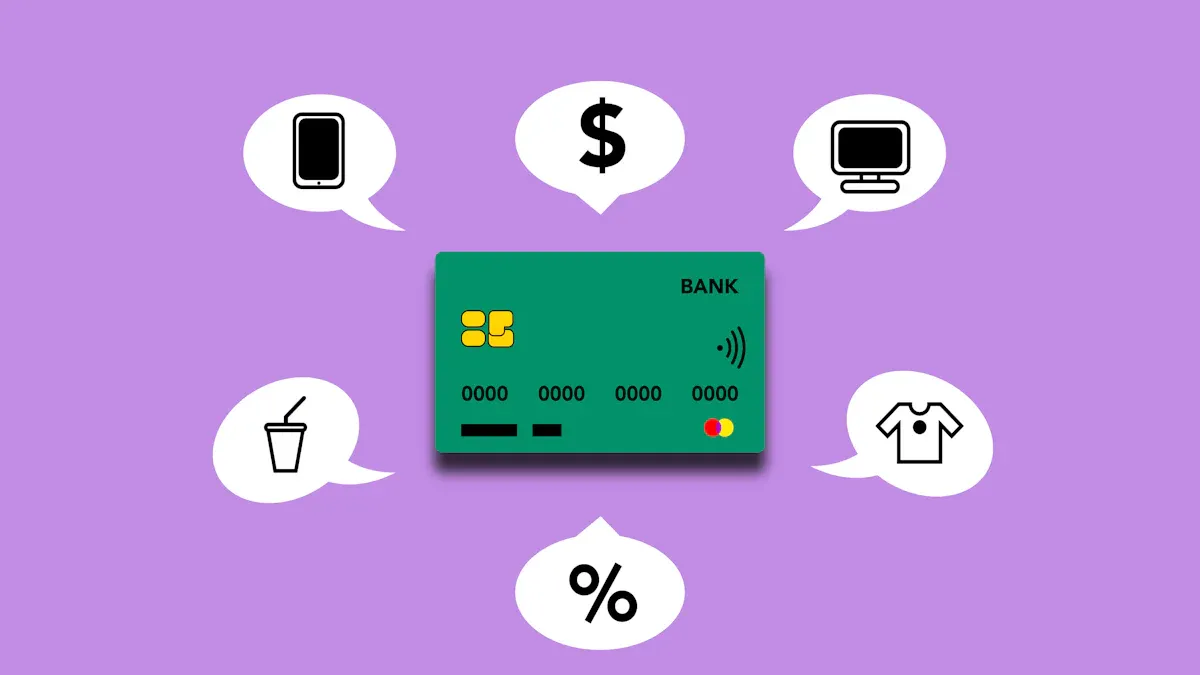How to Use Alipay for International Remittances and Understand the Relevant Rules and Fees?

Image Source: unsplash
You can use the “Cross-Border Remittance” mini-program within the Alipay app to easily complete an international money transfer.
This guide provides a clear step-by-step process. We explain in detail the prerequisites, fees, and rules for remittances to help you smoothly complete each step.
Key Points
- Before using Alipay for international transfers, you need to complete real-name authentication and bind a personal phone number.
- When making a transfer, you must accurately fill in the recipient’s name, address, bank account number, and bank identification code.
- Alipay international transfers do not count toward your annual $50,000 foreign exchange quota, but there are per-transaction and annual transfer limits.
- Transfer fees include a handling fee and possible telegraph fees, with exchange rates fluctuating in real time but locked at the time of payment.
- Transfers cannot be canceled after submission, and the arrival time is typically 3 to 5 business days, so please be patient.
Pre-Transfer: Account Preparation and Requirements
Before initiating a transfer, you need to ensure your Alipay account and the recipient’s information are fully prepared. This prevents interruptions and ensures funds arrive smoothly.
Account Type and Real-Name Authentication
First, you must have a fully authenticated Alipay account. Financial services have strict requirements for account security. Typically, Alipay international transfers require you to complete a higher level of authentication.
Mainland China’s real-name authentication system is divided into several levels:
- Two-Factor Verification: Name + ID number
- Three-Factor Verification: Name + ID number + Phone number
- Four-Factor Verification: Name + ID number + Phone number + Bank account
To use the transfer function, you usually need to complete four-factor verification by linking a bank card to meet financial-grade security standards.
Binding a Personal Phone Number
Your Alipay account must be linked to a valid personal phone number. This number is critical for receiving verification codes and important notifications. During key steps like payment and transfer confirmation, the system sends verification information to this phone number to confirm it’s you operating.
Preparing Recipient Information
Accurate recipient information is the cornerstone of a successful transfer. Errors in information can lead to transfer failure or significant delays. You need to obtain complete and accurate details from the recipient in advance.
For transfers to the U.S., for example, you typically need to prepare the following information:
- Recipient’s Full Name
- Recipient’s Address
- Bank Name
- Bank Account Number
- SWIFT/BIC Code
- Routing Number
Important Note Be sure to double-check every detail with the recipient. Even a single spelling error in the name or a wrong digit in the account number can cause the bank to reject the deposit. Thoroughly checking before submission is the best way to avoid issues.
Alipay International Transfer Process

Image Source: unsplash
After preparing your account, you can start the actual transfer process. The entire process is completed within the Alipay app, with a clear interface and explicit guidance. Below is a detailed step-by-step guide.
Accessing the “Cross-Border Remittance” Function
First, you need to locate and access Alipay’s international remittance service.
- Open your Alipay app.
- In the search bar at the top of the homepage, type “Cross-Border Remittance.”
- Select the “Cross-Border Remittance” mini-program from the search results and click to enter.
You can also click “More” on the Alipay homepage and find the “Cross-Border Remittance” function under the “Fund Transactions” category.
Filling Out Recipient and Transfer Information
After entering the mini-program, you’ll begin creating a new transfer. This step is critical, requiring you to carefully fill in every piece of information.
First, you need to enter the amount you wish to send and select the recipient’s country. Alipay allows users to send money to over 200 countries and regions globally, but specific support and services may vary by region. For example, the delivery method and processing time differ when sending to different countries.
| Country or Region | Transfer Method | Estimated Processing Time |
|---|---|---|
| Philippines | GCash (e-wallet) | Instant |
| Bank Account | As fast as 1 business day | |
| Indonesia | E-wallet | As fast as minutes |
| Bank Account | As fast as 1 business day |
Next, you need to accurately fill in the recipient’s detailed information. The required information varies by country. Among them, SWIFT Code and IBAN are two common bank identification codes.
- SWIFT Code (or BIC): This is a standard format for identifying a bank globally, typically consisting of 8-11 letters and numbers. It’s required for transfers to most countries, including the U.S., Canada, Australia, and Japan.
- IBAN (International Bank Account Number): This is a code used globally to uniquely identify a bank account, commonly required in Europe and some Middle Eastern countries. If transferring to these regions, you typically need to provide an IBAN.
Reiterating: Accuracy is Paramount Be sure to double-check all information with the recipient, including name spelling, bank account number, SWIFT Code, or IBAN. Any minor error could lead to transfer failure, funds being returned, or prolonged delays.
Confirming Fees and Exchange Rates
After filling in all information, the system generates a transfer details confirmation page. On this page, you can clearly see all key information.
- Real-Time Exchange Rate: The displayed exchange rate is the real-time rate provided by Alipay’s partner bank. To facilitate your operation, this rate is typically locked for a short period (e.g., 10-20 minutes) when you create the transfer. You need to complete the payment within this time to ensure the transaction is executed at this rate.
- Fee Breakdown: The page clearly lists all fees required for this transfer, mainly consisting of two parts:
- Handling Fee: Usually a fixed fee per transaction, such as 7 USD.
- Telegraph Fee: Some transfer paths involve intermediary banks, incurring a telegraph fee, which will also be displayed if applicable.
Please carefully review the transfer amount, recipient information, exchange rate, and fees before payment to ensure everything is correct.
When checking this page, you can also use BiyaPay’s Exchange Rate Inquiry and Comparison Tool to assess the spread and cost based on the “final arrival” standard.
For alternative channels or greater transparency, you can initiate a Remittance through BiyaPay: real-time transparent exchange rates, fees as low as 0.5%, same-day remittance and arrival support, covering most countries and regions worldwide.
BiyaPay is a multi-asset trading wallet that supports free conversion between various fiat currencies and cryptocurrencies. It holds MSB certification in the United States and has completed FSP registration in New Zealand; see the Official Website for details.
Completing Identity Verification and Payment
After confirming all information is accurate, you can proceed to the final step: payment.
- Click “Confirm Transfer” or a similar button.
- The system will prompt you to enter your Alipay payment password or verify via biometric methods like fingerprint or Face ID.
- Once verification is complete, the payment is finalized, and your Alipay international transfer order is successfully created.
Tracking Transfer Progress
After submitting the transfer, your main concern is the funds’ whereabouts and status. Alipay provides convenient tracking features to keep you updated on your transfer’s progress.
- Transaction Record Check: You can log into Alipay at any time, go to the “My” page, find “Bill,” and click to view the transfer record to check its current status, such as “Processing,” “Sent by Bank,” or “Received by Recipient.”
- Confirmation Email and Notifications: After initiating the transfer, you typically receive a confirmation email from Alipay containing transaction details and a tracking number.
- Funds Tracker Function: Within the “Cross-Border Remittance” mini-program, you can use the “Funds Tracker” feature to view detailed transaction history and status updates, including amount, date, and current processing stage.
If the transfer encounters issues or hasn’t arrived after a prolonged period, you can contact Alipay’s online customer service for real-time assistance.
Core Rules, Fees, and Limits

Image Source: pexels
Understanding the rules, fees, and limits of Alipay international transfers helps you better plan your funds and avoid unexpected issues. This section is the core of the transfer process, so please read carefully.
Fee Structure: Handling Fee and Telegraph Fee
When initiating a transfer, the total cost typically consists of two parts: a handling fee and possible telegraph fees.
- Handling Fee: This is the base service fee paid to Alipay’s partner bank. It is usually charged per transaction. Depending on the transfer path and partner bank, fees vary; some users report a per-transaction fee of 15 USD, while others are charged a fixed amount in RMB (equivalent to about 7 USD). The exact fee amount is displayed on the transfer confirmation page.
- Telegraph Fee and Intermediary Bank Fees: If your transfer requires one or more intermediary banks to reach the final recipient bank, a telegraph fee may apply.
💡 Potential Additional Fee Alert Cross-border transfer paths are sometimes not fully transparent. This means that, in addition to the fees shown on the Alipay page, intermediary or recipient banks may deduct their own processing fees. These fees cannot be predicted in advance and may result in the recipient receiving slightly less than expected.
Transfer Limits: Does Not Affect Annual Foreign Exchange Quota
This is one of the most attractive features of Alipay transfers. You need to understand two types of limit restrictions.
1. Personal Annual Foreign Exchange Quota: Unaffected
According to China’s foreign exchange regulations, each mainland Chinese resident has an annual foreign exchange purchase quota of 50,000 USD. However, transfers made through Alipay are treated similarly to overseas card spending, with funds drawn directly from your RMB account. Therefore, they do not count toward your 50,000 USD annual foreign exchange quota.
| Fund Use | Counts Toward $50,000 Annual Quota? |
|---|---|
| Purchasing foreign currency directly at a bank and sending it abroad | Yes |
| Using Alipay for international transfers | No |
| Overseas credit or debit card spending | No |
2. Transaction-Specific Limits: Must Be Followed
While not affecting the foreign exchange quota, the transfers themselves are subject to payment platform limits to ensure compliance.
- Per-Transaction Limit: According to the latest policy, the per-transaction limit for overseas consumption has been raised to 5,000 USD, facilitating payments for tuition, large purchases, etc.
- Frequency and Annual Total: Alipay sets different frequency and annual total limits for various purposes.
- Household Expenses: Up to 15 transfers per month.
- Personal Expenses and Salaries: Annual total limit of approximately 600,000 RMB.
- Service Purchases: Annual total limit of approximately 300,000 RMB.
Note: Specific limits may vary based on your account authentication level, linked bank card type, and recipient country. The most accurate information can be found on Alipay’s transfer page.
Exchange Rate Calculation Method
The exchange rate determines how much RMB you ultimately pay. Alipay’s exchange rate is provided in real time by its partner bank.
When you fill out transfer information, the system displays a “real-time exchange rate.” This is the settlement rate for the transaction. To prevent market fluctuations from affecting your transfer, the system typically locks this rate for a short period (e.g., 10-20 minutes). You need to complete the payment within this time to ensure the transaction is executed at this rate.
Exchange Rate is Not the “Mid-Market Rate” You need to understand that the “real-time exchange rate” displayed on the page is not the real-time mid-market rate of the global foreign exchange market. It usually includes a profit margin added by the partner bank, typically a markup of 1%-3% on the mid-market rate. This cost is not listed separately but is embedded in the exchange rate.
Expected Arrival Time
The arrival time of a transfer is influenced by multiple factors, and you need to have reasonable expectations.
Typically, transfers take 3-5 business days to arrive. Some e-wallet receiving methods in Asian countries or regions may be faster, even achieving near-instant delivery.
However, the following factors may cause delays:
- Holidays: Public holidays in mainland China or the recipient’s country may pause bank processing, extending the arrival time.
- Information Errors: This is the most common cause of delays. Errors in the recipient’s name spelling, bank account number, or SWIFT code may lead to the bank rejecting the transaction or returning the funds.
- Compliance Reviews: To prevent financial risks, some transactions may be flagged for additional manual review, which could take hours or days.
- Peak Transaction Periods: Around global holidays (e.g., Christmas or New Year), remittance volumes surge, potentially slowing down the processing network.
Therefore, if you have urgent funding needs, plan ahead and allow sufficient time for the operation.
We hope this guide helps you confidently use Alipay for international transfers. It offers a convenient option that does not count toward your annual foreign exchange quota.
Important Reminder Before Starting Be sure to complete account preparation and carefully verify every piece of recipient information to ensure funds arrive smoothly.
If you encounter any issues during the transfer process, you can contact official support through the following methods:
- Transaction Inquiries: global.service@alipay.com
- Technical Issues: connect_support@service.alipay.com
Now, you can follow the guide’s steps to start your first transfer.
FAQ
We’ve compiled some of the most common questions users face during transfers. We hope these answers address your concerns in advance.
What happens if a transfer fails?
You don’t need to worry. If a transfer fails, the funds are typically refunded to your payment account within a few business days. The most common reason is incorrect recipient information. Please double-check the information and initiate a new transfer.
Can I cancel a transfer after submission?
You cannot actively cancel a transfer after submission. The system immediately processes your request and sends the funds to the partner bank. Therefore, before clicking “Confirm Transfer,” double-check all information to ensure accuracy.
Does the recipient need to pay additional fees?
It’s possible. Some intermediary or recipient banks may charge a processing fee. This fee cannot be predicted in advance and may be deducted from the transfer principal, resulting in the recipient receiving slightly less than expected.
*This article is provided for general information purposes and does not constitute legal, tax or other professional advice from BiyaPay or its subsidiaries and its affiliates, and it is not intended as a substitute for obtaining advice from a financial advisor or any other professional.
We make no representations, warranties or warranties, express or implied, as to the accuracy, completeness or timeliness of the contents of this publication.
Related Blogs of

Another Major Drop! Why Is the A-Share Index Falling Non-Stop – Where Exactly Is the Problem?

Stop Relying Only on the Shanghai Composite: How the Shenzhen Component and ChiNext Indices Reveal New A-Share Opportunities

Beginner’s Guide: What to Do When a Stock Hits Limit-Down? Can You Still Trade?

In-Depth Review: After ChiNext Dropped Over 1% and Rebounded, Who Will Be Tomorrow’s A-Share Leader?
Choose Country or Region to Read Local Blog
Contact Us
BIYA GLOBAL LLC is a licensed entity registered with the U.S. Securities and Exchange Commission (SEC No.: 802-127417); a certified member of the Financial Industry Regulatory Authority (FINRA) (Central Registration Depository CRD No.: 325027); regulated by the Financial Industry Regulatory Authority (FINRA) and the U.S. Securities and Exchange Commission (SEC).
BIYA GLOBAL LLC is registered with the Financial Crimes Enforcement Network (FinCEN), an agency under the U.S. Department of the Treasury, as a Money Services Business (MSB), with registration number 31000218637349, and regulated by the Financial Crimes Enforcement Network (FinCEN).
BIYA GLOBAL LIMITED is a registered Financial Service Provider (FSP) in New Zealand, with registration number FSP1007221, and is also a registered member of the Financial Services Complaints Limited (FSCL), an independent dispute resolution scheme in New Zealand.




















